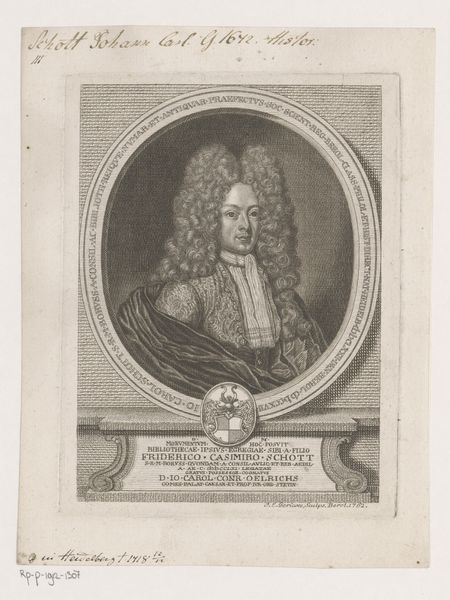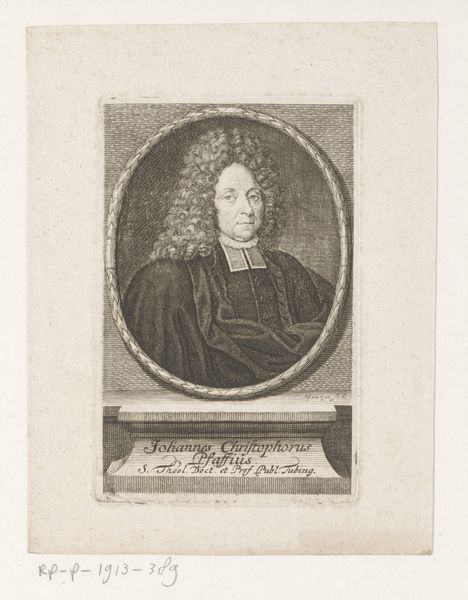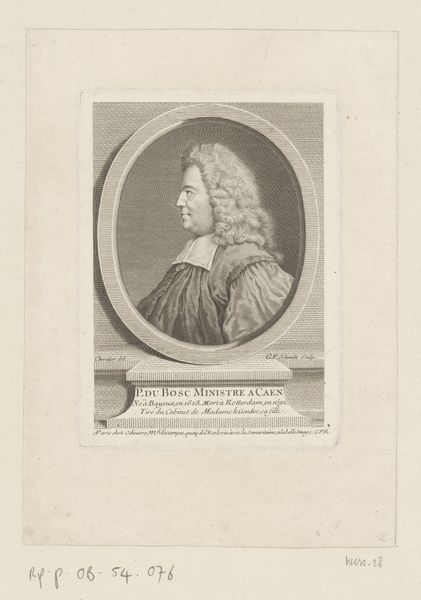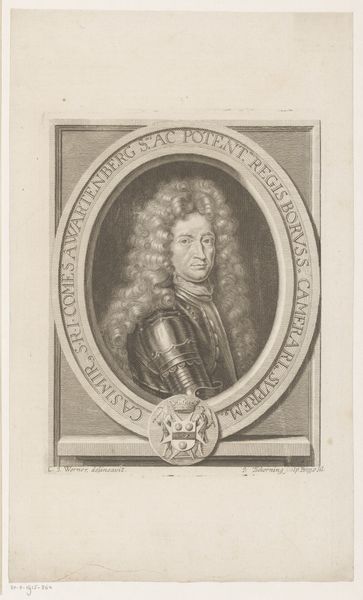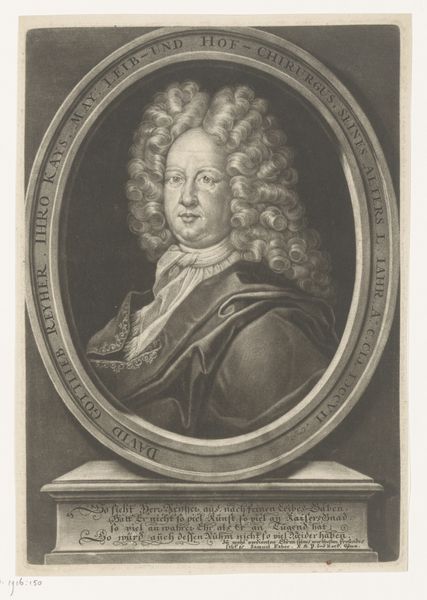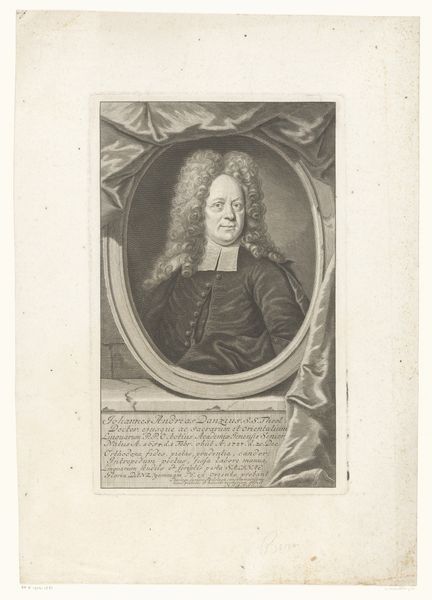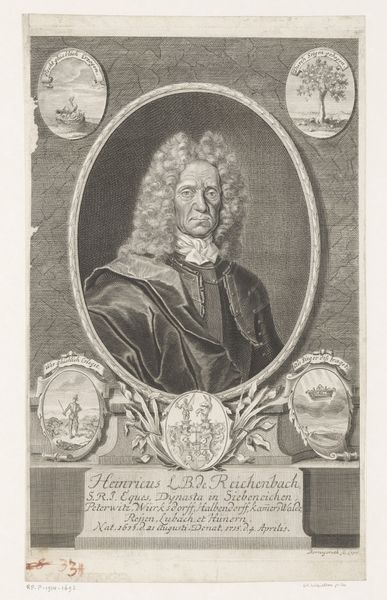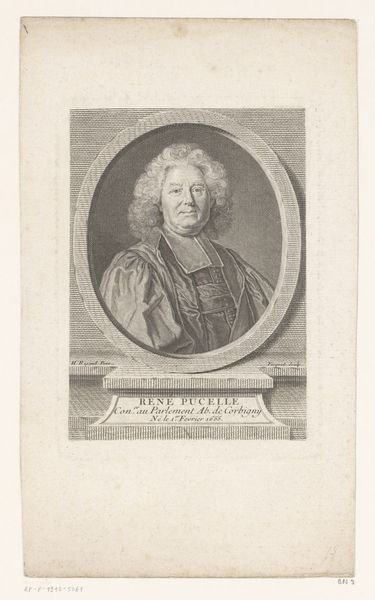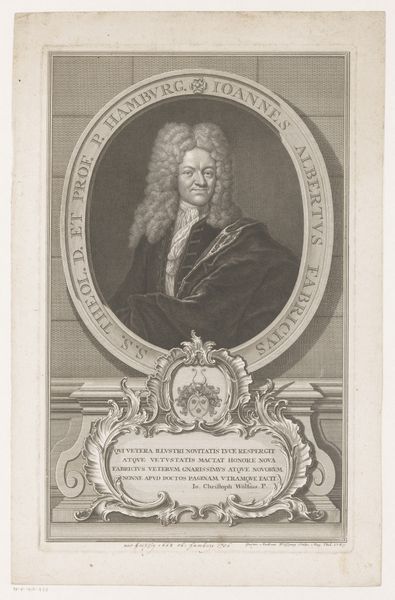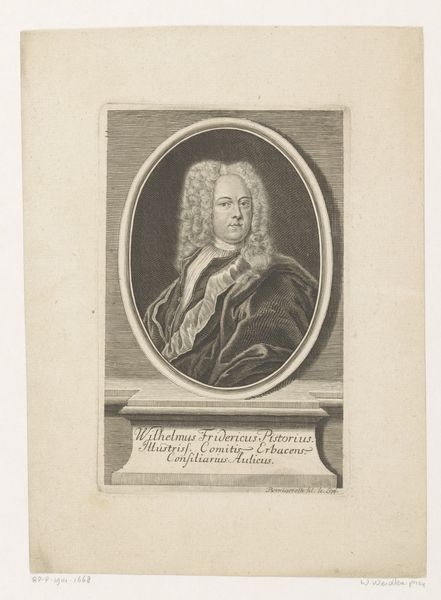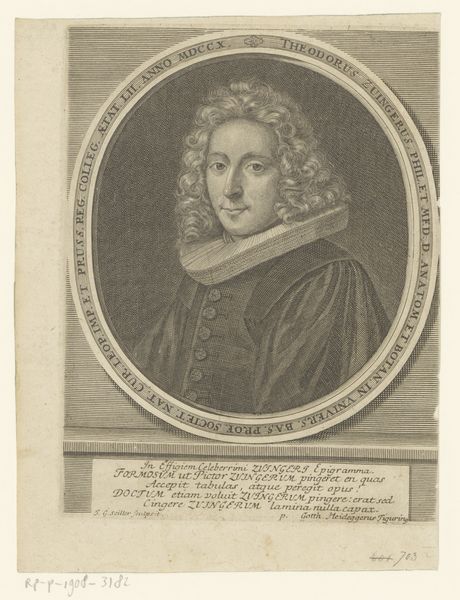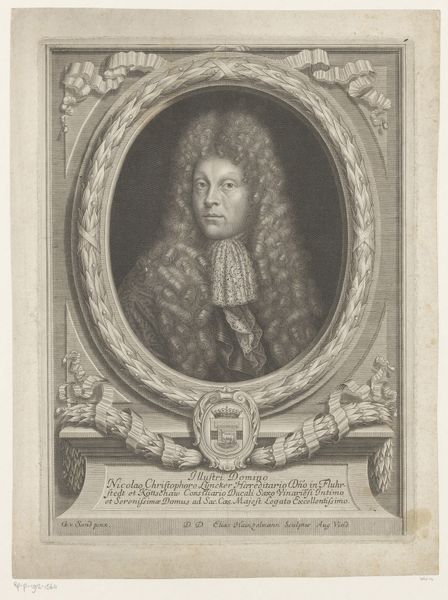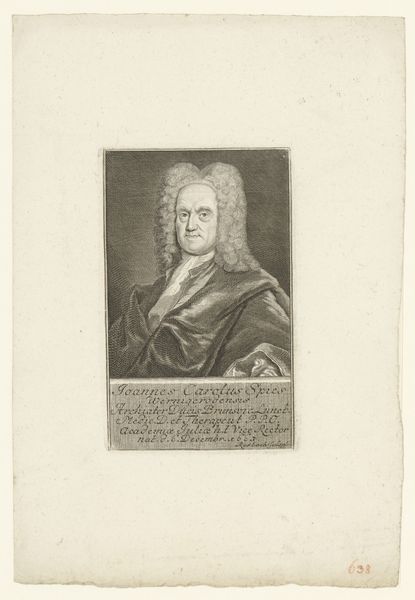
Portret van Johann Franz Eckher von Kapfing und Liechteneck 1684 - 1748
0:00
0:00
johannandreaspfeffel
Rijksmuseum
print, engraving
#
portrait
#
baroque
# print
#
old engraving style
#
retro 'vintage design
#
historical photography
#
history-painting
#
engraving
Dimensions: height 128 mm, width 84 mm
Copyright: Rijks Museum: Open Domain
Curator: Up next we have a rather striking engraving. The Rijksmuseum holds this portrait of Johann Franz Eckher von Kapfing und Liechteneck, created sometime between 1684 and 1748. Editor: Yes, there's an interesting tension in this print. Despite the apparent formality—that ornate oval frame, the careful script—there’s also a certain earthiness. The texture of the hair, for instance, is quite striking and unrefined in some ways. Curator: Indeed. The choice to depict Eckher within such an oval frame speaks to the visual conventions of Baroque portraiture, aiming to elevate the subject through classical forms. The engraving medium also allowed for wide dissemination, shaping the public image of influential figures. Editor: And the very close cropping intensifies the gaze, doesn't it? We're meant to scrutinize every line, every shadow defining his face. Look at the way light plays across his vestments. Curator: It’s a calculated composition. Eckher held significant religious and political power, being both a bishop and a prince. These weren't simply personal portraits; they served to legitimize power, projecting an image of authority and divine favor. The surrounding Latin text underscores his status within both religious and political hierarchies. Editor: Yes, this makes me wonder: Was there an ideal of virtue presented in this particular type of representation? He seems calm and collected, radiating serenity above all else, despite any tumults of leadership in which he must have been caught up. Curator: Portraits such as this very deliberately promoted an image of the sitter. Therefore we might ask, how reliable a likeness it would offer its intended viewers. I mean, what elements have been accentuated or suppressed in this portrayal? Editor: A good question. When I consider its stylistic attributes, this artwork stands out for how skillfully the light and shadow suggest form, the almost tactile quality of his wig… These aesthetic choices reinforce a very calculated sense of status. Curator: Analyzing its socio-political context gives a whole new perspective to what might be, simply put, a striking man with impressive curly hair! It's crucial to think of what that meant at the time. Editor: And thinking carefully about what those things looked like. It is a reminder to consider these beautiful engravings as more than just representations, but complex, visual testaments to faith and power.
Comments
No comments
Be the first to comment and join the conversation on the ultimate creative platform.
